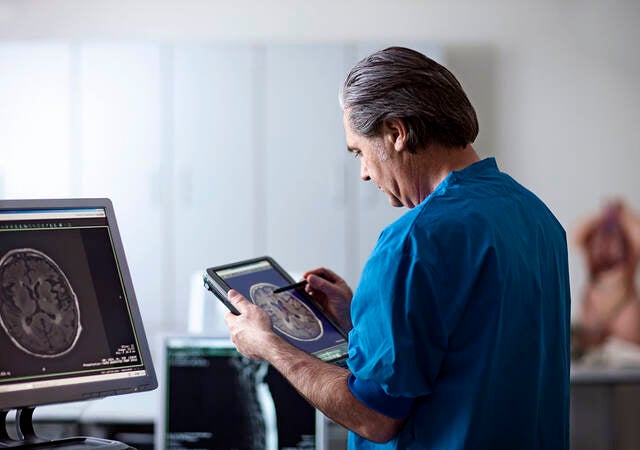October 5, 2023
The European Commission (EC) has been coordinating efforts with the Medical Devices Coordination Groups (MDCG) to publish new and revised guidance. On behalf of the European Association for Authorized Representatives (EAAR), Emergo by UL is a member of several MDCG groups, and can provide frequent updates on the latest regulatory developments in Europe.
The latest revised and new documents from the EC and MDCG cover Medical Devices Regulation (MDR) transitional provisions for devices falling under Ann3ex XVI, and the Manual on Borderline and Classification for Medical Devices.
Q&A on transitional provisions for products without an intended medical purpose covered by Annex XVI of the MDR
Earlier in 2023, we informed you about Regulation (EU) 2023/607, extending transitional provisions set out in the MDR, and setting out conditions for benefitting from those extended transitional periods. Additionally, the EC adopted Implementing Regulation (EU) 2023/1194 to align the transitional provisions set out in the Common Specifications for Annex XVI devices (CS), to those set out in the amended MDR.
As manufacturers were still unclear as to when to apply with the Common Specifications, the EC has published a Q&A document on the transitional provisions that apply to Annex XVI devices.
Manual on borderline and classification for medical devices under the MDR and the In Vitro Diagnostic Medical Devices Regulation
European regulators have also issued revisions to the latest Manual on Borderline and Classification for medical devices and IVDs. As Emergo by UL noted upon the manual’s publication in late 2022, any further revisions to the new version will not include updates to the erstwhile Medical Device Directives now that the MDR and IVDR have taken effect.
The latest updates to the manual are cited below:
- Root canal irrigation solution
According to the manufacturer, Sodium hypochlorite (NaOCl) 3% solution is intended to irrigate the root canal of the tooth as needed for debridement during instrumentation. The chlorhexidine (CHX) 2% solution is intended to be used for the irrigation and debridement of root canals after instrumentation in endodontic treatment.
The manufacturer indicates that the aim of the irrigation is to dissolve the tissues and to have a cleaning effect. For both products, the manufacturer does not claim the disinfection of root canals but argues that NaOCl and CHX solutions act as “a liquid mechanical file” and considers that the infection is treated by a mechanical action. NaOCl has an antimicrobial action and has the ability to dissolve biofilm components. CHX is an active ingredient of many approved medicinal products.
As such the EC ruled that these root canal irrigating solutions containing NaOCl or CHX should be classified as class III per rule 14 of Annex VIII to the MDR.
- Temperature sensors embedded in orthopedic devices for compliance tracking
The product in question is a temperature sensor that is intended to be embedded in orthopedic devices, for example, scoliosis braces. Is the device an accessory for the orthopedic medical devices it is intended to be used with? Orthopedic devices can be used and be performant without the sensor, but it is claimed that the sensor increases patient compliance and therefore therapeutic success of the orthopedic devices. The EC ruled that “increasing patient compliance” and “providing information to better assess the performance of a medical device” can not be said to specifically and directly aid the orthopedics’ device medical functionality. The sensor therefore does not specifically and directly assist the medical functionality of the orthopedic medical device in terms of its intended purpose and should not be qualified as an accessory for a medical device. The product should not be qualified as a medical device on its own.
- System intended to produce sclerosing foam
This system is intended by its manufacturer to just produce, in an on-the-spot manner, the sclerosing foam, which is considered a medicinal product, and that is going to be introduced afterward in the body by a syringe that is not part of the system. In this case, as neither the system itself nor the capsule or the stirrer administer the foam directly to the patient, being only intended for the preparation of the medicinal product, it can be concluded that it does not fulfill the definition of a medical device according to Article 2 Regulation (EU) 2017/745 (MDR) and should not be qualified as such.
- n-butyl-2-cyanoacrylate based adhesives
The products are n-butyl-2-cyanoacrylate (nBCA) based adhesives that close the treated vessel via an adhesive seal, intended for the permanent and complete endovascular adhesive closure of the great saphenous vein (GSV) and associated varicosities when treating venous reflux disease.
Under the MDD different classifications (IIb vs. III) of these devices were made by manufacturers, based on the time of degradation of nBCA. The EC ruled that under the MDR these devices should be classified as Class III devices, since in the third indent of rule 8 8 of Annex VIII to the MDR does not mention the time of absorption, therefore all devices that are absorbed by the human body, i.e. not excreted without modification from the body, should be classified as class III devices.
- Custom-made cranial implant
The implant is specifically made for a patient to replace parts of the skull in order to protect the brain from the environment. The intended use of a custom-made skull implant requires that it is placed on the dura mater. The dura mater is part of the central nervous system since it is the outer layer of the meninges. According to point 2.7. Annex VIII MDR, the brain, meninges and spinal cord are part of the central nervous system. Therefore these custom-made cranial implants, which are specifically intended to cover the dura mater, will automatically contact the dura mater. Therefore, it should be classified as class III, according to the second indent of rule 8 of annex VIII to the MDR.
Emergo by UL consultants in Europe anticipate additional revised MDR, IVDR and related guidance documents from the EC and MDCG through the end of 2023, and will provide updates as they become available.
Request more information from our specialists
Thanks for your interest in our products and services. Let's collect some information so we can connect you with the right person.









